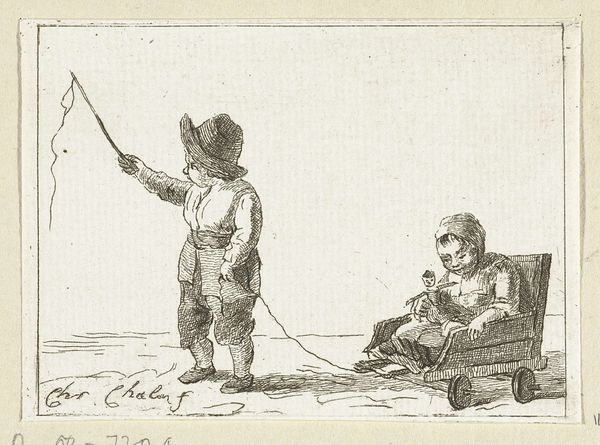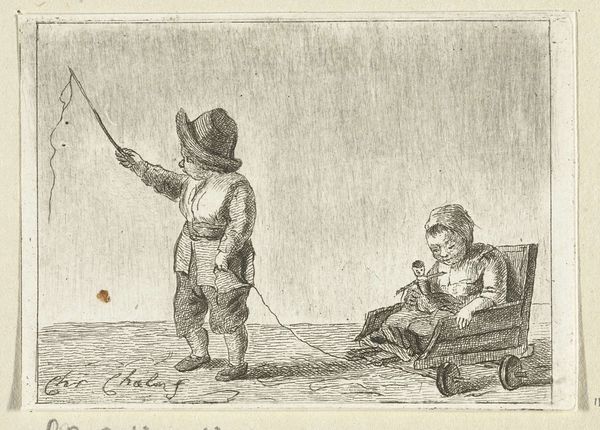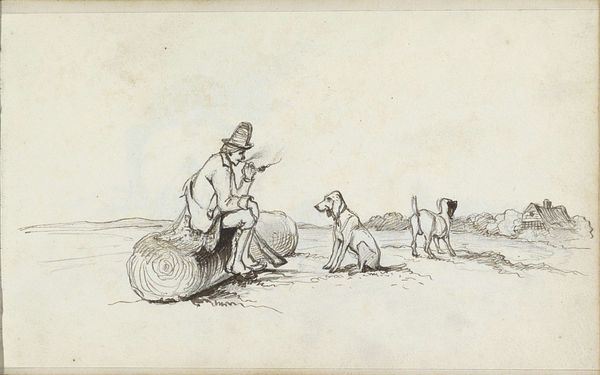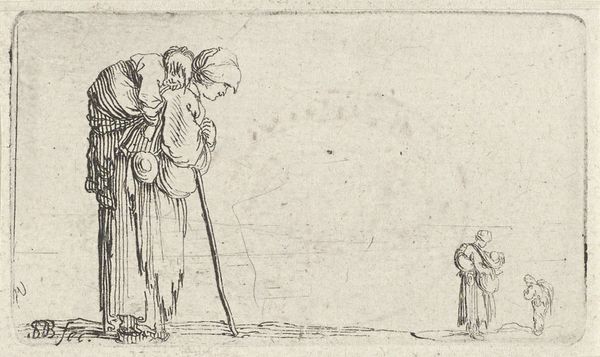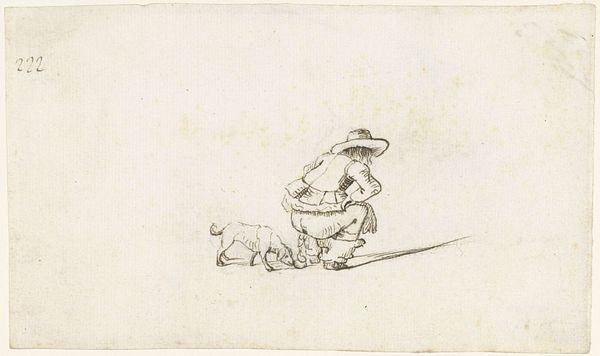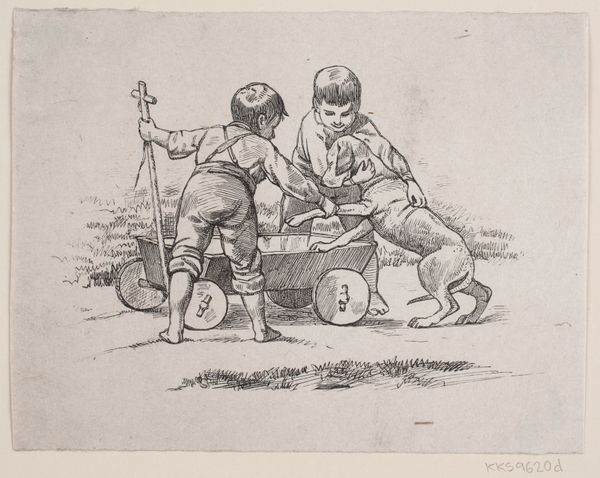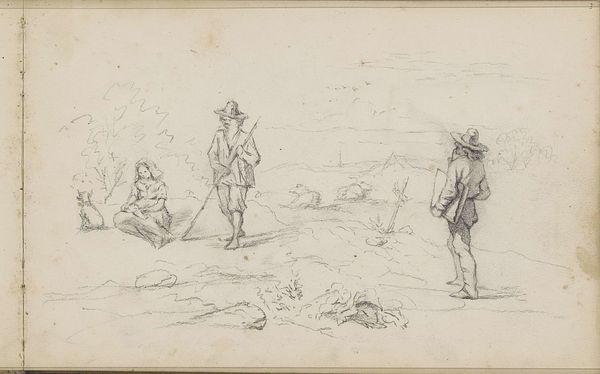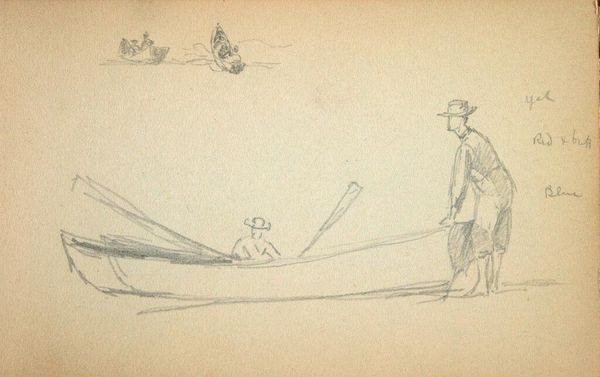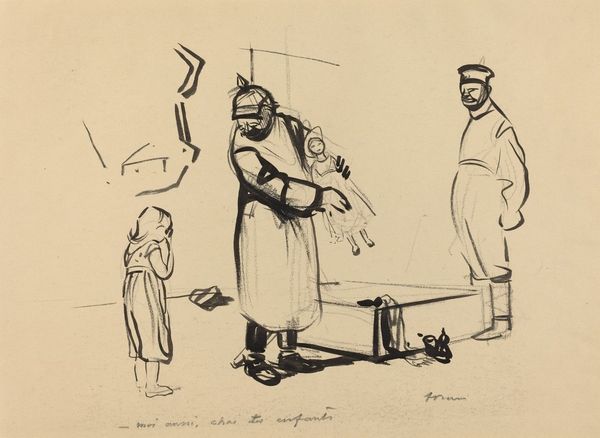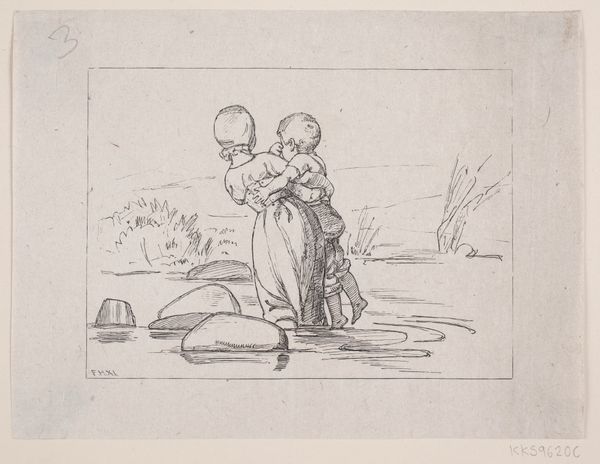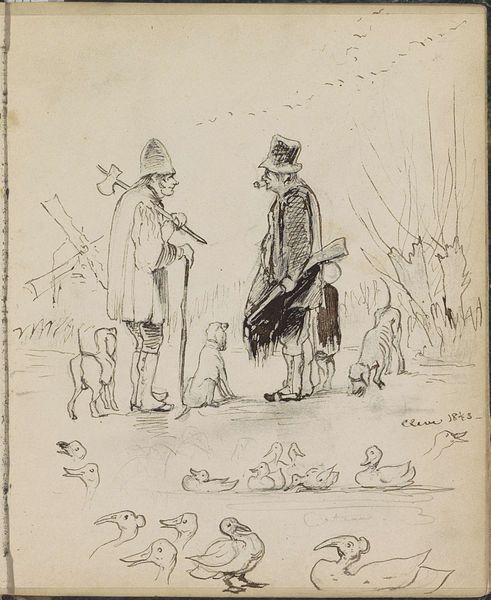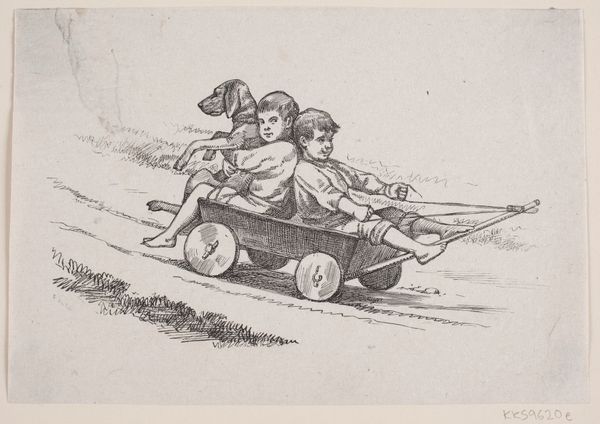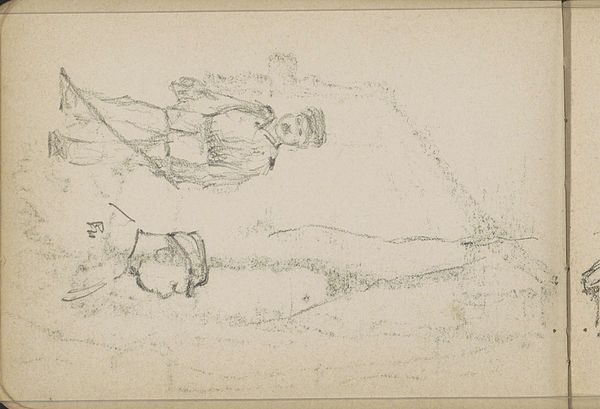
drawing, paper, ink
#
portrait
#
drawing
#
comic strip sketch
#
landscape
#
cartoon sketch
#
paper
#
personal sketchbook
#
ink
#
idea generation sketch
#
sketchwork
#
ink drawing experimentation
#
pen-ink sketch
#
sketchbook drawing
#
genre-painting
#
storyboard and sketchbook work
#
sketchbook art
#
realism
Dimensions: width 91 mm, height 67 mm
Copyright: Rijks Museum: Open Domain
Curator: Here we have Pieter de Mare's "Kinderen met kar," or "Children with Cart," created between 1777 and 1779. It's an ink drawing on paper, currently residing here at the Rijksmuseum. My first impression is that its delicate line work captures a wonderfully intimate, almost melancholic scene. Editor: Melancholic is interesting. I see the rudimentary nature of the sketch pointing to its use as preparation, probably tied to production costs in an era when resources were scarce. Pen and ink on paper suggests affordability, possibly intended for mass reproduction rather than a singular art object. Curator: I wouldn’t necessarily say it's mass-produced or aimed at wide circulation. Note the meticulous detail within each figure, especially around their clothing. It transcends a mere sketch, presenting a narrative distilled through form and line. Editor: But look at the child pulling the cart – their stance, their attire, even the makeshift flag – it reflects the societal structures of labor and childhood prevalent at the time. Art wasn’t created in a vacuum, so how does the lack of color interact with labor and class? The bare quality heightens its immediacy and perhaps highlights economic disparities. Curator: The lack of color accentuates the purity of the forms. Consider the negative space and its function in isolating these children. There’s a balance here between what is rendered and what remains implied, fostering contemplative viewing. Editor: Balance for whom? Surely de Mare knew of the market for his work and understood his audiences, and what about those actually pushing carts? Are these merely aesthetically arranged forms, or are they echoing labor relations of that time, where children were a source of labor, whether artistic or other types? Curator: It presents childhood, though, not necessarily child labor directly. Their very poses denote something less strained. He doesn’t glorify labor—if anything, he uses this depiction to make a statement of childhood being different than laborious adult life, and presents the forms to do so. Editor: Still, art exists as part of production chains whether of art or daily life and that fact cannot be ignored when exploring the deeper cultural impacts of its artistic decisions. Curator: That is true and quite insightful. Ultimately, de Mare’s choice of simple material allows a connection with both children and social settings. It allows insight through his formal artistry and its cultural production to his audience. Editor: Indeed, it is the intertwined analysis that shows these bare features expose not merely compositional attributes, but hints of daily living.
Comments
No comments
Be the first to comment and join the conversation on the ultimate creative platform.
